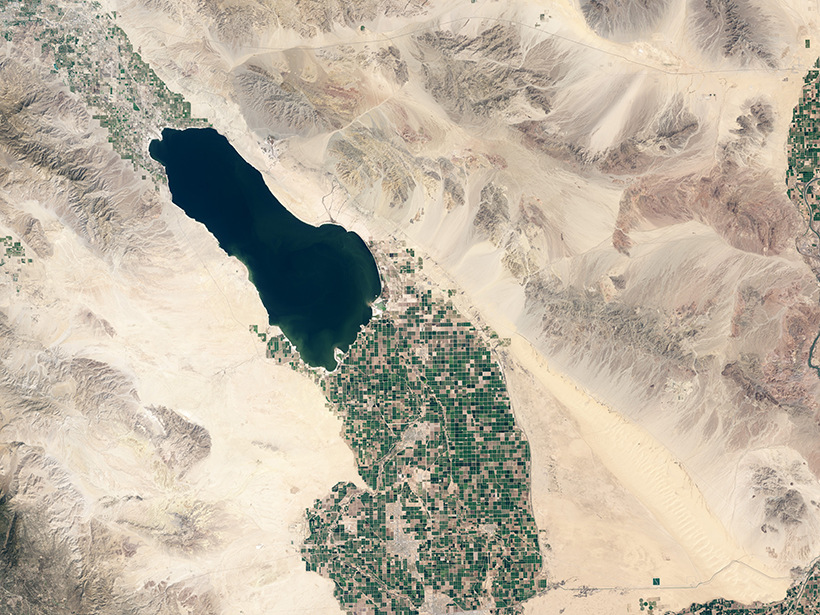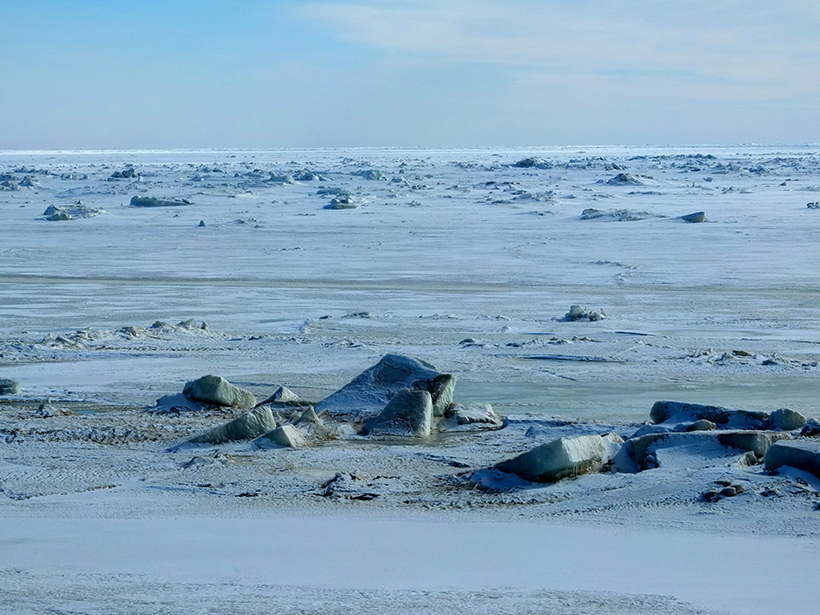A high-resolution map of surface displacements indicates that the 2017 Chiapas earthquake caused substantial creep along a segment of the San Andreas Fault, located 3,000 kilometers away.
Hazards & Disasters
As Arctic Sea Ice Disappears, What Happens to Ecosystems?
The northern Bering Sea is experiencing record-setting low winter sea ice levels, which are impacting plankton, fish, and other animals in the region.
Diverting the Mississippi River May Not Save Louisiana’s Coast
New research finds that man-made river diversions have previously led to land losses.
Finding Faces in Hailstorms
Machine learning technology helps scientists recognize severe weather patterns.
Ocean Observations for Everyone
As the ocean observation community expands its research enterprise, it needs to better engage the end users of its data.
Is Chicago Water Pollution Halting a Silver Carp Invasion?
Pollution is definitely not the solution to stopping invasive silver carp, researchers assert. But cleaner waters could affect the invasion front.
New Volcanic Complex Found Below the Southern Tyrrhenian Sea
Researchers have identified a previously unknown volcanic-intrusive complex that originated through the melting of mantle material at the northern edge of the Ionian slab.
Nuclear Bomb or Earthquake? Explosions Reveal the Differences
A series of controlled chemical detonations in the Nevada desert is helping researchers discern between ground shaking caused by nuclear explosions and earthquakes.
El Niño May Be a Culprit Behind the Cholera Epidemic in Yemen
Increased rainfall in East Africa and subsequent wind may have brought infected bugs to Yemen, causing the worst cholera outbreak of our time.
Forecasting Solar Storms in Real Time
Predicting when solar storms will hit Earth remains a tricky business. To help, scientists can now submit their forecasts of coronal mass ejections online as they unfold in real time.










